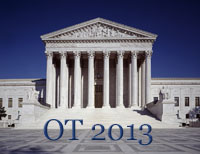“With Friends Like These . . .”: New Critiques of Graham and Miller
The U.S. Supreme Court’s decisions in Graham v. Florida (2010) and Miller v. Alabama (2012) undoubtedly constitute the most important developments in Eighth Amendment law over the past decade. Graham banned life-without -parole (LWOP) sentences for juveniles convicted of nonhomicide offenses, while Miller prohibited mandatory LWOP for all juvenile offenders, even those convicted of murder. I have a lengthy analysis of the two decisions in this recently published article.
A special issue of the New Criminal Law Review now offers a pair of interesting critiques of Graham and Miller. Interestingly, both authors seem sympathetic to the bottom-line holdings of the two decisions, but they nonetheless disagree with central aspects of the Court’s reasoning (and, to some extent, also with one another). Both focus their criticisms on the Court’s use of scientific evidence regarding the differences between adolescent and adult brain functioning.
The more radical perspective comes from Mark Fondacaro, a psychologist who has emerged as a leading critic of retributive responses to crime and advocate for scientifically informed risk-management strategies.

